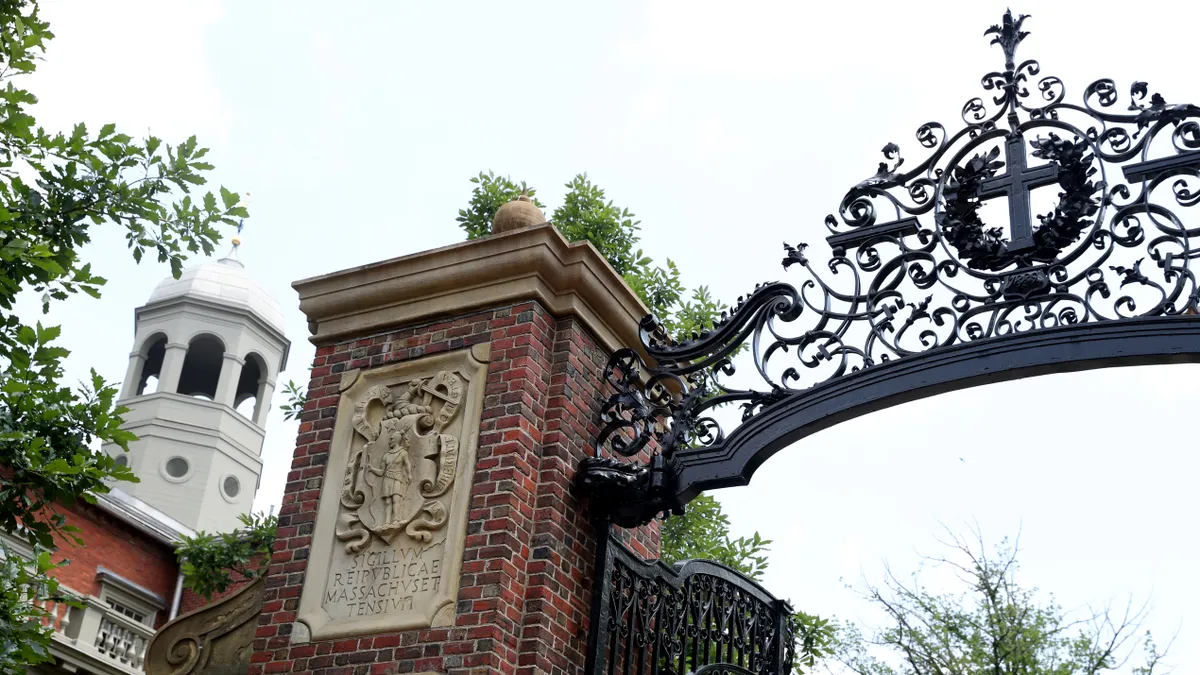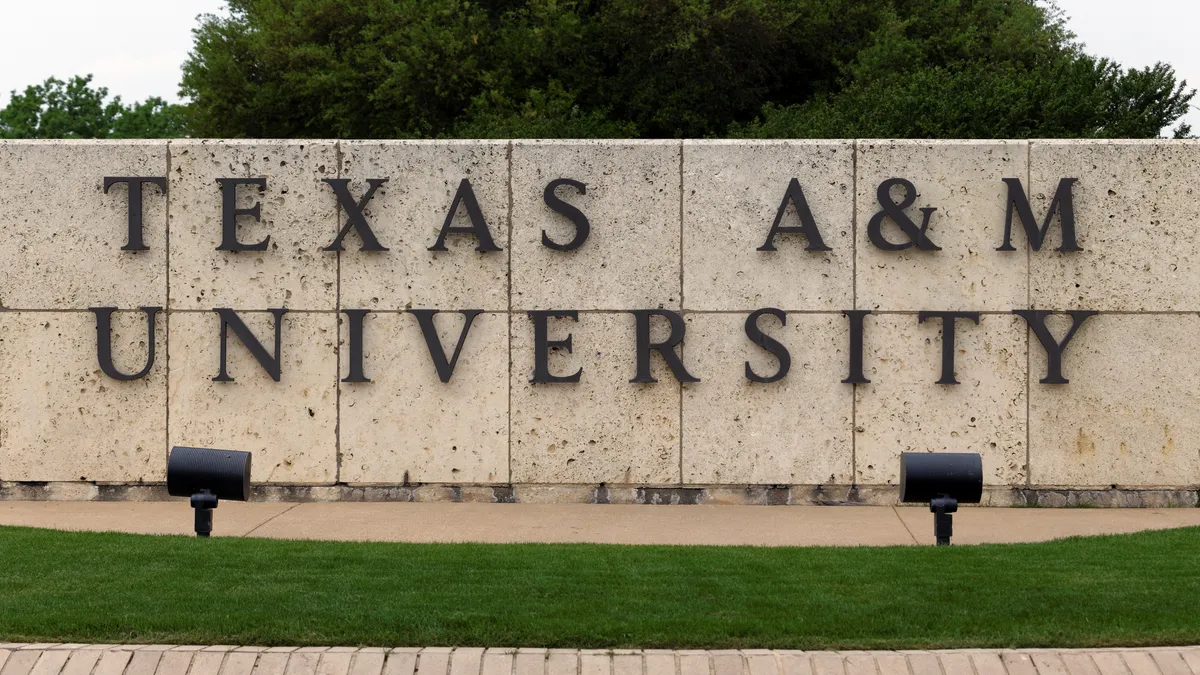Some 700 colleges posted open spots last year on the National Association for College Admission Counseling's College Openings Update. It's the list NACAC publishes annually to share which of its member institutions have slots for students, as well as available financial aid and housing, past the traditional May 1 admissions deadline.
Last year's number of colleges that volunteered openings, which ultimately totaled 775, was record breaking for the admission trade group's database, which it has put out for more than 30 years. At the time, it revealed the extent to which the coronavirus was suppressing college enrollment.
Now, colleges are prepping for largely in-person instruction this fall after coronavirus cases fell sharply across the U.S. As of Friday afternoon, NACAC has logged 532 institutions across the country, as well several outside the U.S., with open seats.
The lower number may signal that the unstable admissions landscape is starting to settle — that fewer colleges are hard-pressed to meet their enrollment benchmarks. But uncertainty lingers among some enrollment management professionals who may be having difficulty recruiting students amid an environment changed by the pandemic, said Madeleine Rhyneer, vice president of consulting services and dean of enrollment management at consultancy EAB.
"The crystal ball is still cloudy" on this admissions cycle, Rhyneer said.
Enrollment patterns hard to predict
NACAC's database is an imperfect proxy for enrollment trends. Schools must self-report the information, meaning some colleges with open slots likely aren't on the list. It encompasses institutions with rolling admissions, meaning they evaluate applications as they come in rather than advertising a spring deadline. Colleges also have to update their entries themselves, so they could be outdated.
For this reason, NACAC hesitates to glean enrollment patterns from the dataset, said Melissa Clinedinst, the organization's director of research. Institutions might not advertise with NACAC for as simple a reason as missing the emailed invitation to do so, she said.
Still, the number of colleges reporting available spots this year is in line with pre-pandemic levels, Clinedinst said. More than 520 schools reported open slots for fall 2019, and more than 570 did for fall 2018.
"But we haven't quite fully recovered from the pandemic," she said. "Admissions processes haven't gotten quite back to normal at colleges, so we don't know the reasons why they might not participate."
College enrollment was turbulent in the first full year of the pandemic. While some top-ranked schools and research universities saw booming application numbers, enrollment across higher ed fell. Community colleges bore the brunt of the declines.
The health crisis forced admissions professionals to turn to digital methods to replace hallmark tactics such as grand-scale admittance events and high school visits. Many more colleges also adopted test-optional policies than in previous years. And while many enrollment officials said it wasn't hard to make admittance decisions without entrance exams, colleges rely on the SAT and ACT for far more than just prospects' scores.
Test takers submit personal and demographic information to the College Board and ACT, the assessment providers, which they in turn sell to institutions. Colleges target students to market with this data.
With more applicants opting not to test, their names may be lost to institutions.
"People are trying to figure out how to fill out a robust funnel of prospects to meet enrollment goals," Rhyneer said. "They need to cast a broader net and figure out where they could spend more money to find additional qualified prospects."
Who's on the list?
Despite the NACAC list's limitations, it offers a glimpse into the types of colleges that may be struggling to reach enrollment goals. Several of the colleges on it are small liberal arts colleges.
These institutions, which tend to be tuition dependent and not particularly wealthy, were some of the schools higher ed experts anticipated would be on shaky financial ground during the health crisis. And in some cases, they were proven right: Concordia College, a liberal arts school outside Manhattan, and Mills College, a historically women's school in California, both announced this year they would move to shut down or be acquired.
However, "it's not worth sounding the alarm bells yet," for liberal arts schools, said Chris Marsicano, founding director of Davidson College's College Crisis Initiative, which is tracking pandemic-era trends. Many of them weathered the economic downturn better than expected, and a credit ratings agency forecasted the sector will bounce back.
More surprising to Marsicano was the addition of public flagship institutions on the list — prominent names like Ohio State and Iowa State universities — that he didn't think would have trouble rounding out their classes.
But once again suggesting the database's limitations, an Ohio State spokesperson said in an email that it was in error that NACAC's list this week reported the university having available first-year and transfer spots on the main campus in Columbus. The spokesperson said the enrollment office would contact NACAC to correct the mistake.
Iowa State admits students on a rolling basis and posts on the NACAC list annually, a spokesperson for the university said.
Colleges fill out the information themselves, but it is not automatically updated on NACAC's website, Clinedinst said. The organization manually refreshes the database — multiple times a day when it is first released, and then perhaps once a day after it's been live for a while, she said.
This year, NACAC pushed out the list more than a week ahead of schedule, meeting the requests of high school counselors, Clinedinst said. It is typically published after May 1 and will remain on the group's website until at least the end of July, though that may extend into August, Clinedinst said.
NACAC is trying to gauge the shelf life of such a resource, she said, as many colleges don't tend to update their entries after early May.
The organization won't be getting more concrete admissions data anytime soon, either. While it usually surveys colleges each year on admissions trends, it did not do so during the pandemic because it didn't seem relevant in such a challenging year, Clinedinst said. NACAC is also reevaluating its research agenda and may not administer the survey again this year, she said.
"We really just don't know what to expect this year," Clinedinst said.
This story has been updated with a comment from Iowa State University.






















